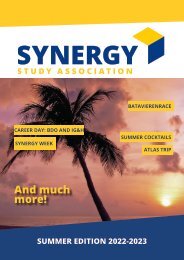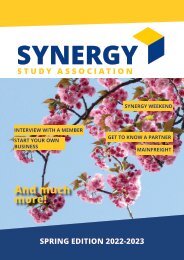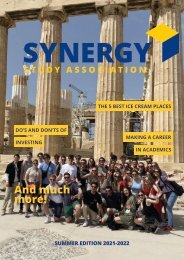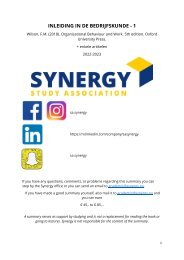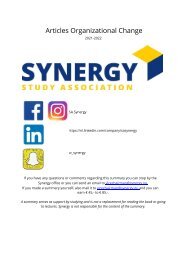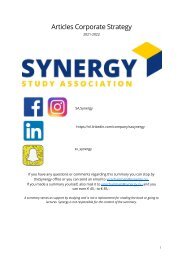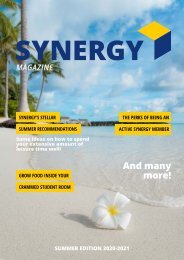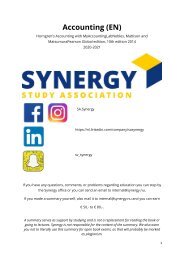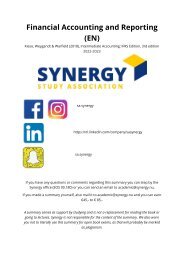Leadership in Organizations
You also want an ePaper? Increase the reach of your titles
YUMPU automatically turns print PDFs into web optimized ePapers that Google loves.
subord<strong>in</strong>ates can come up with possible solutions. Manager chooses best<br />
solution.<br />
6. Def<strong>in</strong>es: manager def<strong>in</strong>es the problem, then states the limits and the group can<br />
make the decisions.<br />
7. Participates: group makes decisions. Manager is equal participant, no more<br />
formal authority than other team members. Limits as cash, risk and strategy.<br />
Tannenbaum and<br />
Schmidt say that<br />
there are forces<br />
that <strong>in</strong>fluences<br />
decisions. They explicitly believe that the manger does have a choice! Three areas of<br />
forces: <strong>in</strong> the manager, <strong>in</strong> the subord<strong>in</strong>ates, <strong>in</strong> the situation.<br />
Forces <strong>in</strong> the manager<br />
• Value system: manager knows he can make decisions by himself and has that<br />
authority.<br />
• Confidence <strong>in</strong> subord<strong>in</strong>ates: mak<strong>in</strong>g a judgment call on what he believes the<br />
skill, knowledge and competence his team have <strong>in</strong> order to complete the<br />
assignment. He decides how much he can trust his subord<strong>in</strong>ates to deliver the<br />
tasks. He may decide that his is best qualified to make the decision and not<br />
<strong>in</strong>volve any subord<strong>in</strong>ates.<br />
• Personal leadership tendency: certa<strong>in</strong> ‘traits’ may enable a leader to be more or<br />
less directive <strong>in</strong> decision mak<strong>in</strong>g.<br />
• Manager’s attitude to risk: by releas<strong>in</strong>g the decision-mak<strong>in</strong>g process, he will be<br />
los<strong>in</strong>g control over both process and outcome à higher risk.<br />
Forces <strong>in</strong> the subord<strong>in</strong>ate (nature of the subord<strong>in</strong>ate and the expectations of him)<br />
• Need for <strong>in</strong>dependence: specialist professions need freedom to solve th<strong>in</strong>gs,<br />
because they know it themselves because of their specialism;<br />
• Need for responsibility: the amount of responsibility <strong>in</strong>dividuals are able and<br />
will<strong>in</strong>g to accept.<br />
• Need for boundaries: some people need boundaries to accomplish a task,<br />
others need complete freedom.<br />
• Competence, experience, motivation: these three th<strong>in</strong>gs <strong>in</strong>fluence the<br />
manager’s decision.<br />
10




